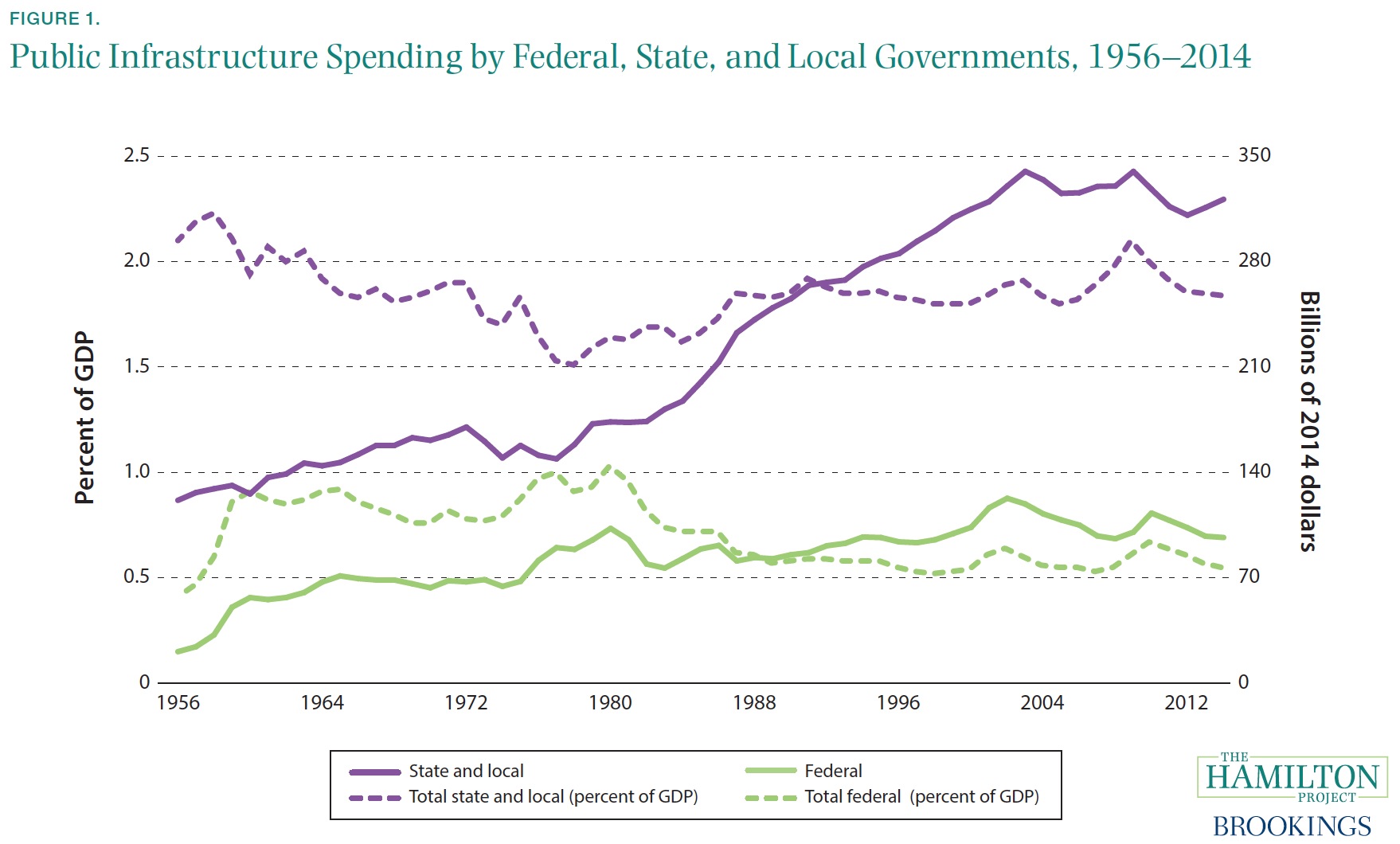Chapter 1. Introduction
THE HAMILTON PROJECT
Most Americans feel the burden of a weakening transportation infrastructure. The evidence is right in front of us: in poor road and bridge conditions, aging airports and seaports, weak passenger rail service, and inadequate public transportation. Most economists and government leaders agree on the merits of upgrading these systems to improve productivity, global competitiveness, and job creation. Most also agree that our nation would benefit from federal action on infrastructure. There are disagreements, however, on which investments to make and how to pay for them, and these disagreements have led to counterproductive inaction.
It is crucial to resolve this stalemate and launch a federal initiative to increase investment before the decay of U.S. infrastructure further affects national well-being. For example, the declining condition of the American road system alone already imposes a large toll on the economy in traffic delays and vehicle repairs.
Moreover, economic reasons suggest that now is an opportune time for infrastructure investment. First, public borrowing rates are near historical lows, with the federal government able to borrow funds at an interest rate of 2 percent, and state and local governments enjoying similarly low rates.1 For any given rate of return on infrastructure investment, a lower cost of funds today results in greater net benefits for society from the investment in the longer run.
Second, although the labor market has rebounded significantly from the economic recession, the job sectors most involved in building infrastructure remain relatively weak. According to the U.S. Department of the Treasury (DoT), 61 percent of the jobs created by investment in infrastructure are in construction, with another 12 percent in manufacturing (DoT with the Council of Economic Advisers 2010). The unemployment rate for construction workers was 8.9 percent in 2014, significantly higher than the 2014 national average of 6.2 percent (Bureau of Labor Statistics n.d.).
Finally, improving infrastructure today provides an opportunity to incorporate new information on the value of increasing resilience. Superstorm Sandy, Hurricane Katrina, and other natural disasters have demonstrated the significant costs of inadequate and decaying roads, bridges, and tunnels, as well as the potential economic returns from investments that make these byways more resilient. By investing now, with the knowledge gained from recent experiences, we can more efficiently and effectively maximize the return on infrastructure investment.
Given the importance and urgency of these investments, we propose a two-track solution: a first track that offers approaches that could be implemented quickly and over the short term, drawing on existing programs and agencies; and a second track of more-strategic approaches that could be rolled out and implemented over the longer term.
In the short-term track, we propose (1) improving and expanding the Transportation Infrastructure Finance and Innovation Act (TIFIA) lending program, (2) bringing back Build America Bonds (BABs), (3) using the Army Corps of Engineers (Army Corps) and Harbor Maintenance Trust Fund (HMTF) in a more efficient way, and (4) indexing the federal gas tax so it varies with retail gasoline prices.
On the long-term track, we recommend (1) federal incentives and guidelines for the development and adoption of new technologies to collect user fees, (2) cooperation among states and municipalities to foster pooled procurement, and (3) development and implementation of a national strategy that calls for federal actors to commit themselves to a long-term plan for infrastructure investment in the United States.
Download full version (PDF): Financing U.S. Transportation Infrastructure in the 21st Century
About the Hamilton Project
www.hamiltonproject.org
The Hamilton Project offers a strategic vision and produces innovative policy proposals on how to create a growing economy that benefits more Americans. The Project’s strategy reflects a judgment that long-term prosperity is best achieved by fostering economic growth and broad participation in that growth, by enhancing individual economic security, and by embracing a role for effective government in making needed public investments.
Tags: Brookings Institution, Infrastructure Week 2015, The Hamilton Project







 RSS Feed
RSS Feed